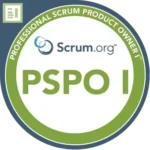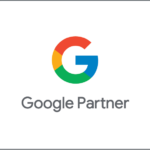With the right Shopware SEO knowledge, you can secure good rankings in Google's organic search results and get one thing above all: free store visitors who generate sales. We provide an overview in this Shopware SEO guide.
Introduction
With well over 100 factors that influence your Google ranking, search engine optimization is no easy task. Even though we won't be able to cover all the factors in this SEO guide for Shopware: There are some important levers and considerations that you should have looked at for your Shopware store.
The right SEO strategy
Before we look at the details, we need the big picture. Only those who have worked out the right strategy and have a plan ready can proceed in a targeted manner. Although this always means "unproductive" effort beforehand, it ensures faster results afterwards. Despite the greater planning effort, we reach our goal faster overall.
Keyword analysis
To begin with, we should determine the keywords - i.e. the search queries - for which the Shopware store wants to rank on Google. There are several questions to consider here
- What do my customers search for on Google?
- Can I answer the search query satisfactorily?
- How many people search for this keyword every month?
- What is the competitive situation for the corresponding keyword?
Let's use an example to illustrate why the above questions are so important.
Formulate and test a hypothesis
Let's assume we have a Shopware store and sell workwear for small and medium-sized companies in the metal industry. And since you also offer protective footwear there, let's think about the following: It would be great if everyone who searches for "buy shoes" on Google ends up in our store. We'd get a lot of traffic to the store! (What do my customers search for on Google?)
Now we have to think about it: Can I answer the search query satisfactorily? The answer is quite clear: No! Most users search for the keyword "buy shoes" not for protective footwear but for shoes for leisure & office.
Now of course we could say: I don't care! The main thing is that I have lots of visitors in my store.
But we shouldn't be indifferent: Because Google recognizes very well that our store cannot answer the search query satisfactorily. It recognizes this from the bounce rate, for example: website visitors will immediately click the back button in their browser to return from our store to Google, as they have not found what they were looking for. As a result, we will never manage to achieve exciting rankings for this keyword, as Google will classify our store as irrelevant for this keyword.
It would be better if we used the keyword "buy protective work shoes" or "buy protective work shoes for metalworkers". As the store specializes in the metal industry, the keyword "buy protective footwear for metalworkers" naturally promises excellent relevance. After all, if anyone can answer the query, it's our store!
Determine search volume
But now we have to ask ourselves the question: How many people search for this keyword every month?
A look at the corresponding Tool to query the monthly search volume actually gives us 0 for this keyword. 0 people search for "buy safety shoes for metal workers" every month. It is therefore completely uninteresting to put any effort into search engine optimization for this. Shopware SEO is hardly worthwhile at this point.
However, if we look at the keyword "buy protective footwear", we find around 30 search queries per month.
Check the competitive situation
In order to finally determine the profitability, we now have to check, what the competitive situation is for the corresponding keyword.
The search query at the current time gives the following picture
- 1st place ebay.de
- 2nd place real.de
- 3rd place ladenzeile.de
- 4th place arbeitsbedarf24.de
- Place 5+6 amazon.de
- 7th place idealo.de
- ..
In each individual case, it is now necessary to decide how realistic it is to overtake eBay, Amazon, Idealo & Co. with the selected keyword and how lucrative the effort is.
Determine profitability
Let's assume that we achieve 1st place. Various studies have shown that on average(!) 30% of clicks go to 1st place on Google. This means that for every 30 search queries, 9 visitors would end up in your store at the end of the month.
Note: We are talking purely about organic search results here. If we use a search engine Google Ads highly competitive keyword, there will be even more competition here, which is why the 30% will probably not be correct.
If our store now has an average conversion of 3% (3 out of 100 store visitors complete an order), then we would have a calculated 0.27 buyers in this month. So the actual number of buyers: 0. We only have our first buyer in the 4th month. In one year, the keyword brings us 3 paying customers, in 3 years 9 paying customers and so on.
The rest of our profitability calculation is based on the average basket and the margin. This allows us to determine whether it is worth the SEO effort.
However, acquisition costs must of course also be taken into account in order to be able to conclusively assess the profitability for this keyword. After all, the customer does not always have to be profitable with the first order. Keyword: customer loyalty. With good marketing to existing customers, buyers can be tied to the store in the long term and so can our keyword will also be profitable in the short term.
Create keyword list
And this was just an example for one keyword. You should do this for all potential keywords and collect the findings in a keyword list.
[convertkit form=1494368]
In this list we first collect all ideas. From short to long tail. Category or product. Because "buy shoes" can have a lot of search volume, but also a lot of competition. The keyword "Nike MD Runner 2 size 42", on the other hand, is long-tail, but may have less competition.
Based on the list, coupled with some experience and taking into account other internal factors, the keywords are then prioritized. This determines which keyword is optimized first. If you need support here, please contact us.
This list is an important cornerstone for successful Shopware SEO.
Produce good SEO content
We have now identified our focus keywords based on our keyword plan. Now it is important that we produce good content for these keywords.
But what is actually good content? What distinguishes good from bad SEO content?
- He is unique
- It is written for the user, not for Google (relevance, user intent)
Above all, unique means that we do not simply copy the manufacturer's description and paste it into our Shopware store. This is called "duplicate content" and can (but does not have to) even lead to penalties.
Incidentally, the length of the content has no absolute effect on the ranking.
The most important thing is relevance: If there is a lot to write about, then write a lot! The more explanatory the product is or the more special features the product has, the more words the text can have. Anything that helps the buyer is also good for the ranking. It actually helps to think outside the box more often. What is important to the customer? What is their need? What distinguishes this product from others? However, the texts should not be unnecessarily bloated with irrelevant content just to have as much content as possible.
However, this also means that if the competitor has better texts with more relevant content, it is likely that they will also achieve better results in Google's rankings with their more extensive content.
Mobile First - optimizing the store for mobile display
When choosing a Shopware theme, make sure that it works well on mobile devices. This is because searches on mobile devices are actually the most important for Google. So if a customer accesses your store on a smartphone and it does not have a good mobile display, this will result in poorer rankings.
Incidentally, Google provides its own testing tool for this purpose: Is my store mobile optimized?
Page load time
One Website with a long loading time? A no-go for Google! And of course for users too: hardly any website visitor wants to wait more than 10 seconds for the page to finish loading.
Shopware provides its own cache/performance module for this under Shopware 5.
Settings > Caches/Performance
The cache serves as a buffer for various data and therefore increases the page loading speed. Make sure that the "Use store in productive mode" option is selected.
We also recommend that the image sizes of your products are not too large (of course they should not be too small either). But avoid uploading the photographer's original files with 24 megapixels. In landscape format, however, they should have at least 1,200 pixels on the long side.
By the way, Google also provides a tool here, the PageSpeed Insights.
On a scale from 0 to 100, Google indicates the performance of the website here. Incidentally, the scoring should not be viewed too strictly. According to Google (John Müller), PageSpeed tends to have an impact on extremely slow websites.
Fun fact: Google itself with its domain www.google.de - a site that essentially consists of just one search slot - currently only scores 83 points for mobile display.
URL structure with Shopware
A well-constructed URL structure helps the user and is therefore also seen by Google. A quick example:
- https://mein-shop.de/4wt3.phpt?catid=31324&pid=424455
- https://mein-shop.de/herren/arbeitsschutzschuhe/atitas-steelwalker-S3
Example 2 is much more pleasant from the user's point of view. I can immediately see from the URL that I am in the category of men's safety shoes and that the Steelwalker S3 model from the imaginary manufacturer Atitas has been selected. So even before I click on the link, I have an idea of what to expect on the page. That seems more trustworthy than option 1.
If I were to remove the URL part "atitas-steelwalker-s3", the URL https://mein-shop.de/herren/arbeitsschutzschuhe/ would take me to the category overview of all protective footwear for men.
With a clean URL structure, I manage to place relevant keywords in the URL and explain the logical structure of my Shopware store to the user.
With Shopware 5, we can influence the structure of the URL structure in the backend:
Settings > Basic settings > Storefront > SEO/Router settings
The default structure for the article detail page ("SEO URLs article template") is as follows:
{sCategoryPath articleID=$sArticle.id}/{$sArticle.id}/{$sArticle.name}
Translated into "plain text", the URL would look like this: https://meinshop.de/hauptkategorie/unterkategorie/id-des-artikels/artikelname
This default setting makes a lot of sense in principle. In individual cases, however, it may make sense to make individual adjustments here.
A few tips for the structure of the URL:
- The URL should contain the keyword. But: No keyword spamming!
- Avoid stop words (der/die/das/und/oder etc.) and umlauts (ö/ä/ü etc.)
- Do not let the directory depth become too complex
- NOT: https://meinshop.de/herren/schuhe/arbeitsschutzschuhe/leder/kunstleder/blau/atitas-steelwalker-s3/
- BETTER: https://mein-shop.de/herren/arbeitsschutzschuhe/atitas-steelwalker-S3
Image SEO
Have you created product images especially for your store? That's great! Because this is also "unique content" and has the potential to appear in Google's image search, which can also generate traffic. If, on the other hand, you use default product images (e.g. from the manufacturer) that are also used by others, your chances of achieving relevant rankings in the image search are significantly lower.
If you use your own images in your store, you should pay attention to the following points:
Use an image size suitable for the web
Images that are too small will hardly get good rankings. The customer in your store hardly wants to look at the product on a small image with 300 px. Images that are too large, on the other hand, cause long loading times. The original files from the photographer should therefore not necessarily be used.
We currently recommend images with a minimum width of 1,200 pixels and a maximum width of 2,800 pixels in landscape format. In practice, the middle ground has proven itself: 1,900 to 2,100 pixels. But of course: in times of 4K screens and retina displays, image resolutions in this respect will certainly continue to develop upwards over the coming years.
Improve the loading time
When you receive the photos from the photographer, a photo is usually several megabytes in size. This causes long loading times on a website. To minimize this, you should consider the following points
- Only use photos in jpg or webp file format. Avoid PNG, TIF or similar formats.
- Use image compression and avoid a quality of 100%. 60-80% have proven to be a good compromise between image quality and image size
- Use services like Squooshto save further data
Use keywords in alt text and image name
Your picture shows the new "Atitas Steelwalker S3"? Then name your picture "atitas-steelwalker-s3.jpg". This is much better than "unbennant1.jpg" or other irrelevant file names. The keyword can be included in the file name.
Also use the alt text. This is primarily intended for barrier-free surfing and transmits the content of the image to programs that read out the screen content. Google can also process this content accordingly. So if (but only if!) you can see the Atitas Steelwalker S3 on your screen, then enter this as the alt text. You can do this in the item details in the "Images" tab on the right-hand side of an image in the image options. There you will find the "Title" field. However, do not spam keywords here and work carefully.
Other factors for good Shopware SEO
This article is already over 2,000 words long. And we've only just scratched the surface. Covering all the topics for successful Shopware SEO is very difficult because, as mentioned, there are over 100 ranking factors and it's always about the sum of all parts. The topics outlined so far provide a good overview of the most important basics and the biggest mistakes that we see our customers making time and time again.
If you have any further questions, please use the comment function on this article, send us an e-mail or give us a call.
Tools
- Is my site optimized for mobile devices? https://search.google.com/test/mobile-friendly
- How fast does my site load? Where is there potential for improvement? PageSpeed Insights
- What is the monthly search volume of my keyword? Google Keyword Planner
- Search Console from Google: Good insight into various topics of my site in Google search (performance, core web vitals, crawling statistics and much more)
- https://squoosh.app/ Compress images before uploading
- How is my site's overall visibility on Google developing? Sistrix Visibility Index
Further support with SEO for Shopware
Do you need further support? Please feel free to contact us. We provide support in all aspects of search engine optimization. From SEOAudit from SEO-optimized content creation to on-page and off-page optimization. We are also happy to provide in-house training for team members for more sustainable work results with checklists and best practice cases.







